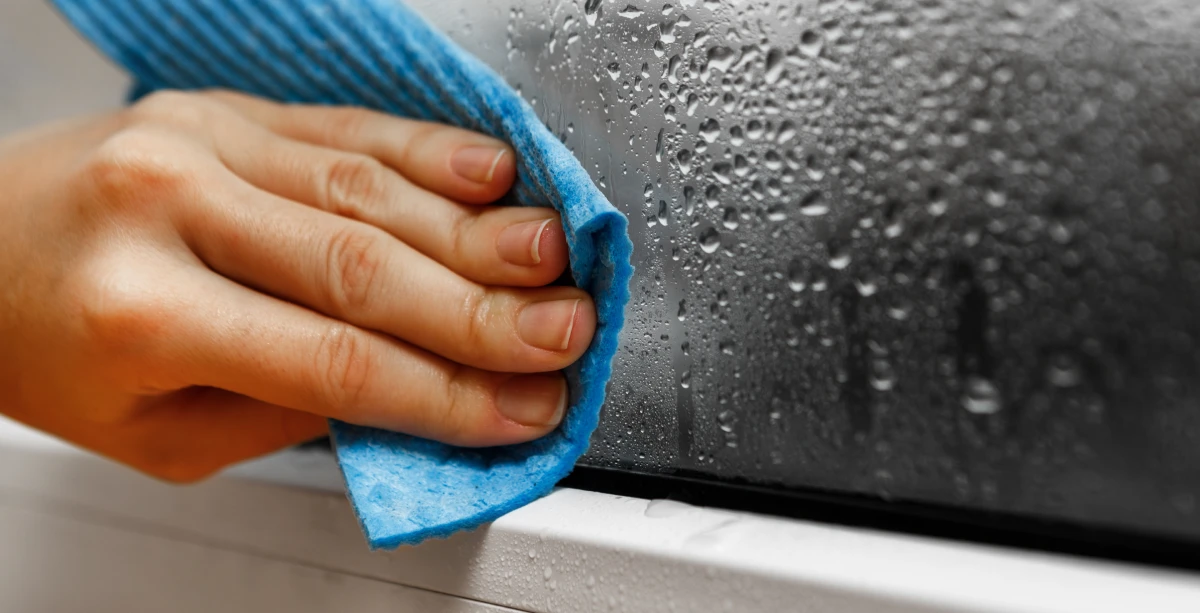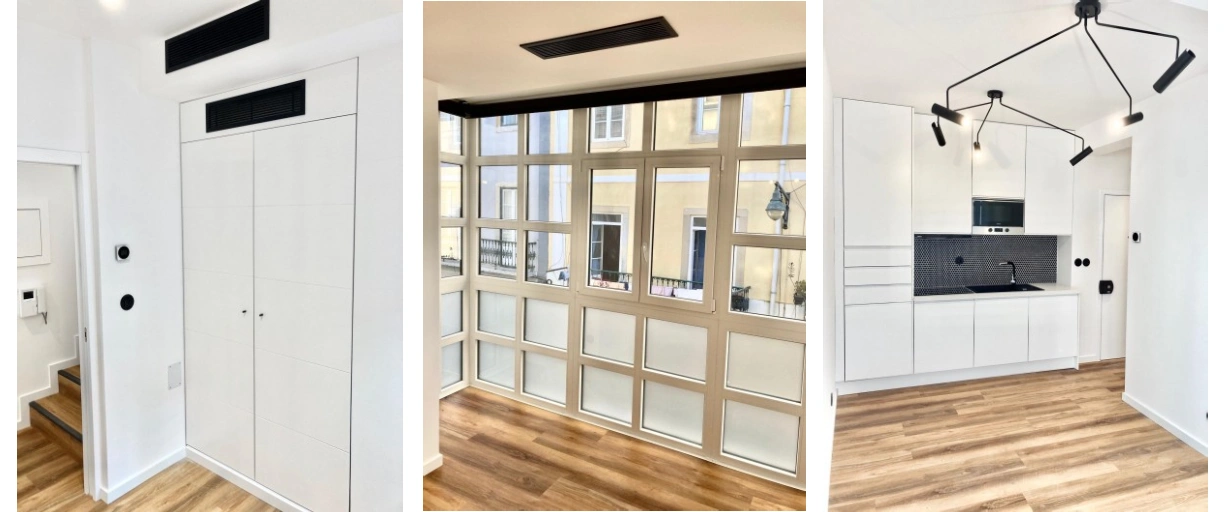
Once winter arrives, it is no surprise that many homes in Portugal feel chilly, as central heating simply is not a common feature. Yet there are several effective ways to warm up a house, although some are more efficient and cost-effective in the long run than others. Renovated homes, for example, provide truly transformative solutions. Just look at the Olarias Apartment, a space that has been completely reimagined by our Portugal Homes’ Project Development & Construction team of experts to deliver unmatched comfort and functionality—a shining example of how old properties can be transformed into inviting, modern retreats.
Is it True that People feel Cold Inside Portuguese Houses?
Portugal is a nation with a long history and a strong heritage. When it comes to properties, that characteristic presents a double-edged sword. While the historical areas gain a great charm due to the traditional budlings and façades, it also poses difficulties to residents who have to make modern life work in places that were built at a time when construction methods were much different and way more limited.
People can usually surpass the lack of stairs or garages or other housing conditions. However, when temperatures start to drop, many residents living in Portugal feel discontent when they get home and do not feel as warm and cosy as they would like. Yes, winters are milder in Portugal than almost anywhere else in Europe. Still, there are days when the thermometer will hit around 5ºC (41°F), especially in January.
When that time comes, many expats who were born in colder countries fill their lungs to say something along the lines of “I lived many years in Finland (or Germany, Poland, Austria and so on) and I feel colder inside my house in Portugal than I did in there”.

That is certainly unfortunate, but also a strong indication that they either live in a place that has not gone through any renovations or, if they do, that the interventions made were not properly thought out or implemented.
To dive into this theme more accurately, we have invited Rogério Magalhães, Senior Civil Engineer at Portugal Homes’ Project Development & Construction department, to share his vast experience and to comment on one of Portugal Homes' very own renovations: an apartment located in Rua da Olarias, Lisbon, which was completely renovated and had its thermal efficiency improved.
Why do Portuguese Houses Feel So Cold?
First of all, it is important to understand why so many people feel that, in Portugal, they often feel colder inside their houses than outside of them. Senior Civil Engineer Rogério Magalhães explains why that is: "The sensation is defined by how we are dressed indoors, along with the relative humidity in the space. It is quite common for people to feel colder inside the house than outside, not only due to the humidity indoors but also because of the lack of ventilation and renewal of the saturated air surrounding them”.

Other than that, there is the fact that central heating is not commonly used in Portuguese construction, since the country is not as cold as places such as Canada, or Norway, for example. Magalhães recalls that “the free energy generated within the home—in the kitchen, bathroom, laundry rooms, and areas with heat-producing equipment—can be distributed to other social living spaces”.
Using that “free energy” from one country to another is different. “In Northern European countries, where the average temperature is around 7–8º Celsius, unlike in Portugal, where the average temperature is 15–16º Celsius, all the energy produced within the home is reused to create a comfortable environment throughout the entire apartment, and at no additional cost”, says Magalhães.
Portugal Homes’ Senior Civil Engineer also highlights that thermal comfort indoors heavily depends on what is called “thermal bridges”, which is “the transfer of energy between the exterior and interior, or vice versa”. He also adds that those bridges “along with the lack of renewal of saturated indoor air are the main causes of thermal discomfort within the space under analysis”.
It is also important to take into account that, once we step outside, we are normally wearing more clothes and maybe even gloves and a scarf. Also, we tend to be moving as we are most likely going from one place to another, and, during the day, the sun can increase thermal sensation. Of course, nobody wants to wear coats and extra layers when sitting on the couch while watching television. Thankfully, there are ways to improve thermal comfort even within older properties through well-planned interventions.
Portuguese Properties in the Winter: What is the Solution?
There are many ways in which Portugal’s residents can warm up their property. The fastest way is, of course, to buy one or two heaters for immediate relief. However, that solution has a whole set of constraints, and is much like treating a symptom, rather the illness.
First, that type of device only heats up a very limited area and, as soon as you step away from it, you will be cold again. Not to mention the increase in the electricity bill.
For those wanting to tackle the problem permanently, bigger interventions are a must. However, betting on just one solution is not enough. “First and foremost, it is important to emphasise that any intervention should be viewed as a comprehensive improvement rather than an isolated measure”, says Magalhães. He points out that the first main intervention to be carried out should focus on the window frames, that should be replaced frames that have thermal brake frames, preferably made of PVC, since “the window sill or the frame perimeter, which in older constructions was designed as a finishing feature, creates a direct link between the exterior and interior, establishing a thermal bridge between the two”, as he explains.
However, as an engineer, Magalhães is categorical in saying that “simply replacing the windows will not be enough to enhance thermal comfort within the space; instead, it requires a holistic approach addressing multiple areas simultaneously”. Other items to be updated are the claddings on the floors and the isolation of ceilings and walls.

That is why, rather than facing a major renovation, it may be preferable to invest in a property that has already undergone intervention. But not just any intervention. As Magalhães points out: “The difference between purchasing a renovated apartment or carrying out renovations independently may depend on whether the individual is financially prepared to acquire a property with pre-installed solutions, or whether they are willing to navigate the complexity of undertaking the work themselves. In either case, the individual should equip themselves with a study that meets their thermal requirements in terms of usage”. And thus enter the Olarias Apartment.
Olarias Street Apartment: A Case Study on Thermal Efficient Renovation
Here at Portugal Homes, we have our own Project Development & Construction department, responsible for the renovation of buildings and units with thorough planning and careful attention to the highest engineering standards. When it comes to temperature enhancement, one project stands out for its complexity as well as for the solutions found.

Located at Olarias Street, in Lisbon, inside a 18th-century building, lies an apartment that underwent a major renovation, that included many solutions to increase its thermal comfort. Rogério Magalhães was the Senior Civil Engineer in charge of the project, which had a few challenges to start with. As he recalls: “The location of the property influenced some of the solutions, as it is situated in an architectural protection zone, making it impossible to implement the interior solutions on a widespread basis.”
The windows, for example, could not be changed. And since they had already been updated (according to limitations) and presented enough efficiency, the engineering team implemented other improvements. “Given the existing limitations, the main intervention was carried out between floors, that is, between our flat and the neighbours’. Inside, work was done on the lateral walls in direct contact with the main façade and the rear. At the ceiling level, there was also an intervention”.
There was an injection of insulation into the empty spaces and the cladding of the lateral walls and façade, using plasterboard panels internally filled with rock wool. The filling between floors was done with specialised polyurethane in expansion mode, an insulation method that uses mechanical equipment. The apartment was also delivered with a pre-installed air conditioning system, and the kitchen and bathroom received a classic air renewal network.

“The improvements were made at the contact surface level, creating a warmer surface to the touch and enhancing indoor air renewal”, explains Magalhães. This shows that even older properties, found in locations that may bring extra challenges, can have their thermal performance improved through a thoughtful renovation.
However, the buyer must be aware. With so many questionable renovations taking the market by storm, it is important to be sure that the project was planned and carried out by a capable technical team. Portugal Homes’ Senior Civil Engineer Rogério Magalhães warns: “Nowadays, on many buildings available for renovation in Lisbon, the primary focus tends to be on the ‘cosmetics’ of the space, with the replacement and installation of more modern materials to present a contemporary, appealing, and updated look”.
If you are wondering how to bypass that, Magalhães has a suggestion: “When purchasing a renovated apartment, it is up to the buyer to assess whether the renovation included a proper evaluation of thermal comfort or, if they prefer not to leave this consideration to others, to invest in implementing a range of factors that ensure comfort tailored to their specific needs”.
Trusted Partners for Hot Investments
Whether you decide to fight the winter cold with a renovation or by buying a new property that has undergone intervention already, one thing is certain: it is paramount to count on a trusted team that will ensure the changes made are not only made to please the eyes.
Portugal Home’s Project Development and Construction department know this. That is why we take no shortcuts. Our team is composed of civil engineers, designers and project managers who are always up to date with the most modern construction standards and who always make an extra effort to take every project to another level.
This is the kind of expertise and commitment that you should look for when investing in the Portuguese real estate market, at any time of the year. That way, your asset will have the return you expect, either on a business or on a personal level.






